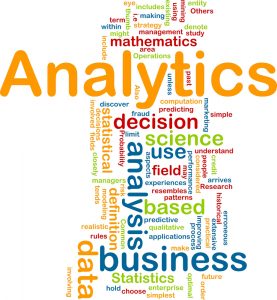 The widespread adoption of the term "analytics" reminds me of the evolution of the term "supply chain management." Initially the term focused on supply chain planning. It involved demand and supply balancing and the heuristics and optimization tools that came out of advanced planning and scheduling. Over time practically everything was included under the supply chain banner.
The widespread adoption of the term "analytics" reminds me of the evolution of the term "supply chain management." Initially the term focused on supply chain planning. It involved demand and supply balancing and the heuristics and optimization tools that came out of advanced planning and scheduling. Over time practically everything was included under the supply chain banner.
Supply chain analytics
Now it’s all about analytics. Most vendors have analytic positioning for their solutions. Just take a look at most of the supply chain planning solutions today. Odds are you’ll see a “supply chain analytics” capability, usually in some form of a reporting module. In the good old days, this was simply called reporting, and it was expected in a solution.
When I joined SAS to work in their global supply chain practice, I had a hard time with the term analytics. How would SAS be able to claim analytic leadership in a supply chain context? Supply chain planning was analytics from the beginning. Analytics were inherently embedded in supply chain planning DNA. The term “analytics” seemed redundant.
Analytic epiphany
Analytics is a lot more than just the mathematics, optimization, modelling and reporting. Sure, these are a vital aspect of analytics, but there's so much more involved. A true analytic solution or platform includes the fundamental tools that enable the analytic lifecycle, whatever the business process.
An analytic platform is a software foundation that’s engineered to generate insights from your data in any computing environment. Built on a strategy of using analytical insights to drive business actions, this platform supports every phase of the analytics lifecycle. From data to discovery to deployment.
Analytic platforms serve many business processes
Whether you're focused on supply chain, manufacturing, production quality, retail/CPG, finance, customer relationship management, insurance, fraud, etc, these all have to source the data. Manage and automate data maintenance. Improve data quality. Automate the planning process. Distribute the results to stakeholders. Alert on the results. Visualize the results and uncover actionable insights. As a result, an analytic platform needs to go beyond the optimization, math and heuristics. It needs to provide the mathematical along with the following components to make up a flexible and extendable supply chain analytic platform:
- Data integration
- Data quality
- Master data management
- Data mining
- Text mining
- Sentiment analysis
- Contextual analysis
- Model building
- Model scoring
- Model management
- Event stream processing
- Data visualization
- Optimization
- Simulation
- Predictive modeling
- Forecasting
- Visual statistics
- Machine learning
A supply chain analytic platform drives value
The supply chain solution providers who are marketing and positioning integrated reporting as analytics in their solution suites are doing you a disservice. Clients I work with are now seeing the possibilities and benefits of incorporating a true analytic platform into their supply chain strategy. Their supply chain environments become more flexible, extendable and customizable to their needs. Planning processes are no longer constrained by the usage scenarios and "analytic capabilities" supported by their legacy supply chain solutions. An analytic platform allows for additional analytic capabilities to augment the out of the box supply chain solutions. In the end, this equates to hitting those KPI targets that drive shareholder value and a better return on supply chain solution investments.
If you want to know more, learn about SAS Supply Chain Intelligence.

1 Comment
Very informative. The supply chain is a great place to use analytic tools to look for a competitive advantage, because of its complexity and also because of the prominent role supply chain plays in a company’s cost structure and profitability.